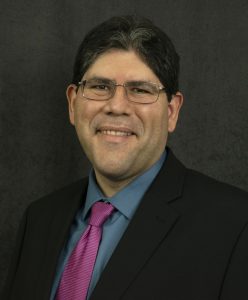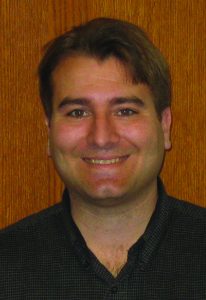Mechanical engineering researchers at Iowa State University are studying ways they can use acoustic sound waves to improve the efficiency of extracting oil from rocks.

The project is led by Jaime J. Juárez, assistant professor of mechanical engineering (ME), with additional support from Michael Olsen, professor of ME. The project is supported with a more than $300,000 grant from the National Science Foundation (NSF).
Sedentary rocks such as shale and sandstone are crucial in the traditional petroleum extraction process because of their porous nature. Pores are open spaces within the rock, into which oil can seep and become trapped. This is analogous to a sponge used to wash dishes, except the sponge in the extraction process is made of rock and saturated with oil. Because of the porous nature of these rocks, as much as 60 percent of the petroleum (i.e. oil) remains trapped inside these porous cavities during the extraction process, rendering it unusable.
“Our goal is to study the use of sound as a mechanism for driving oil out of rock,” said Juárez. “Achieving a higher yield requires unconventional approaches, such as driving a polymer-laden solution at high pressure into the well.”
The researchers will use sound to physically vibrate the oil-bearing rock to “shake” the oil out. Juárez said the process is similar to a person wringing out wet clothing to force out the excess fluid.
The research team used the Keck Microfabrication Facility, located on the Iowa State University campus, to develop a model porous apparatus which is similar to the structure of a porous rock. The apparatus includes a piezoelectric transducer which vibrates when high voltage is applied. These vibrations create acoustic sound waves which then travel through the rock model.
Most of the research for this project will take place in the lab, but to develop their model the researchers relied on past data about porosity and wettability of the rock. Field experiments in China have shown potential in using sound to extract oil, however more needs to be studied about the precise mechanisms used in extraction. This is where Juárez and his team come in.
“We hope that our experiments will help fill in the knowledge gaps and help energy companies develop improved extraction techniques using sound,” Juárez said.
Juárez, whose research expertise focuses on using optical microscopy to monitor the effect that external fields (e.g., acoustic, electric) have on particles at the microscopic level, used this past knowledge when developing the model. He also monitored the transport of oil using optical microscopy.
“Image analysis algorithms that we have used can extract information about velocity and mass transport that can help us model the movement of oil in the rock model,” Juárez said.

Olsen’s area of expertise is experimental fluid mechanics, specifically the application of the laser-based techniques particle image velocimetry (PIV) and planar laser-induced fluorescence (PLIF). These techniques will be used in this research project.
In addition to potentially improving the extraction process itself, Juárez said their research could also have some environmental benefits. For one, the researchers hope to eliminate the salt and polymers used in the current extraction process as a way to lessen the amount of environmental contaminants in the future. Second, the researchers hope that their new method will lessen the amount of energy and water used in the extraction process.
One final component of this project is that the researchers aim to conduct outreach efforts with Hispanic high school students. By 2050, global energy usage is expected to increase by 50 percent (compared to current energy usage rates) so going into the future, Juárez said he would like to conduct these outreach efforts with the hope they might inspire the next generation of culturally-diverse engineers who have the ability to “think outside of the box.”
“These problem solvers can come from any background and I want to engage a demographic that is historically underrepresented in engineering. My goal is to inspire these students to become engineers who will tackle big engineering challenges, like the need for energy,” Juárez said.
The research team recently received an additional $14,000 supplement from NSF to mentor undergraduate students this summer. The students will develop devices that will test some of the ideas the researchers laid out in their grant. Iowa State’s Program for Women in Science and Engineering (WiSE) assisted in the recruitment for the summer program.
Much of the preliminary data for this research was collected by Hsiang-Lan Yeh, a former graduate student advised by Juárez who currently works for Intel. Work on this project started in April 2021 and funding will continue through March 2024.